Did you know that Nepal has a jungle? And that it is home to rhinos, tigers, and elephants? It’s easy to assume that Nepal is all mountains, but the southern part of the country has a jungle. After spending time in the Kathmandu Valley, I went on a jungle safari in Chitwan.
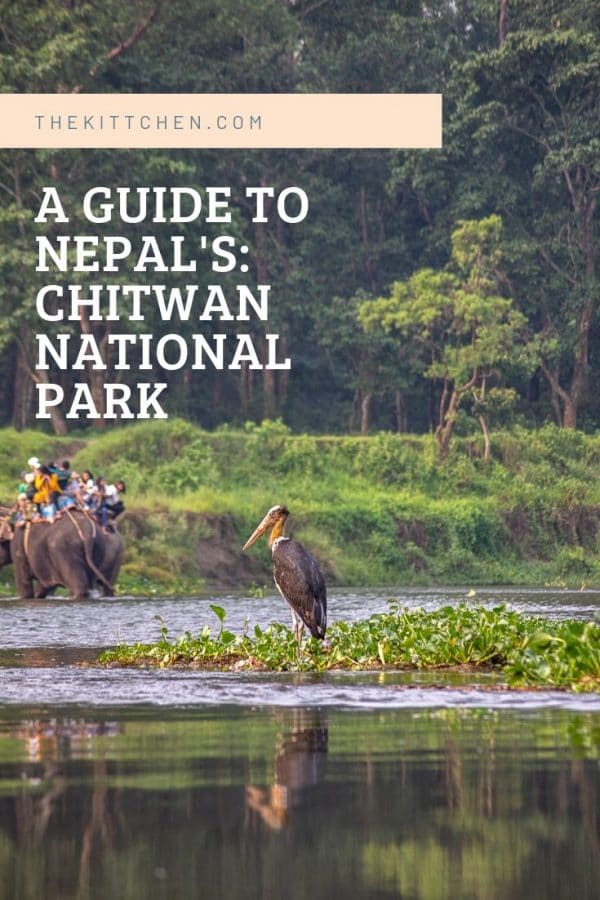
The Chitwan National Park used to be the King’s hunting grounds, but today it is an environment for Nepal’s native wildlife. Most people that visit Chitwan book a tour. These tours last 3-4 days and include activities like nature walks, canoeing in the river, a local dance performance, a visit to a Tharu home, and a jeep safari.
Getting to Chitwan
There are three options. You can take the tourist bus; this is the most affordable option. The bus takes about 6 hours, but keep in mind that the road is just two lanes, and traffic can be heavy. The next option is to take a private car (about $150 round trip) which would be more comfortable, but you still might run into traffic. The last way to get from Kathmandu to Chitwan is to fly.
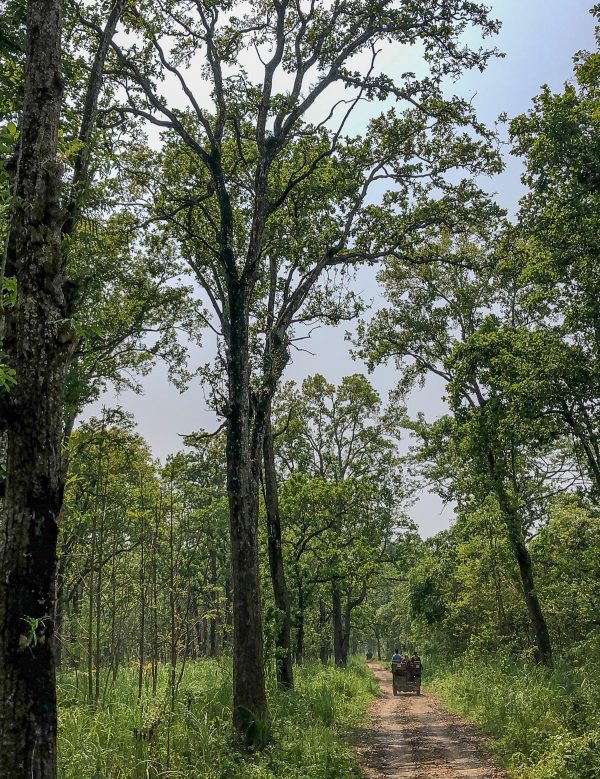
When to Visit Chitwan
I visited at the end of May, and by this time it was hot and the elephant grass had grown so tall it was harder to spot animals. You also want to avoid visiting during the monsoon season which lasts from June to September. The best time of year to visit Chitwan is October to April, the weather is cooler, the grass isn’t as high, and you can avoid the heavy rains.
What to do in Chitwan
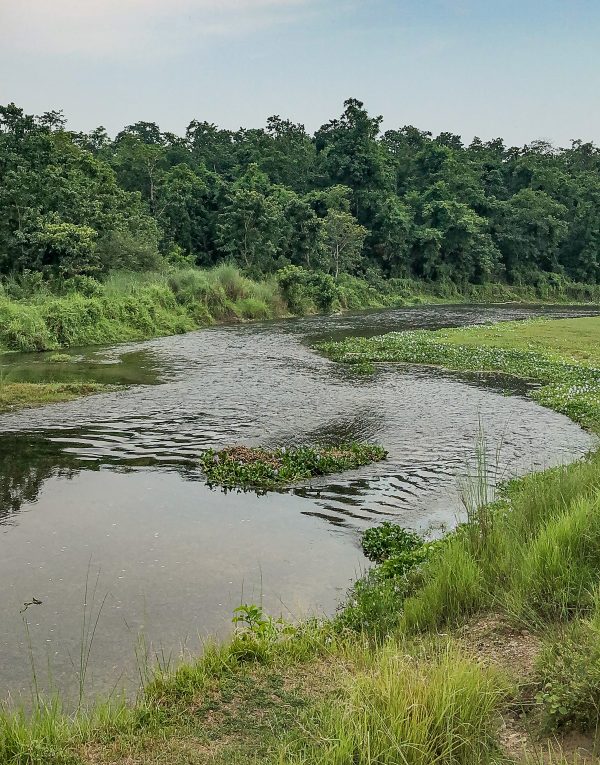
Nature Walks
As part of our tour, we went on a couple of nature walks. These walks introduced us to the environment and let us spot some birds.
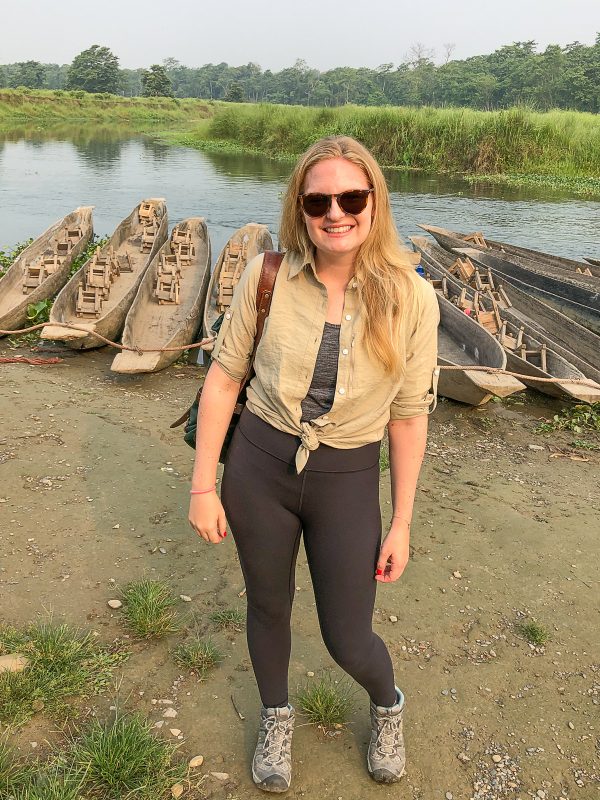
Canoeing
One of my favorite activities was canoeing in a dug-out canoe. These long skinny canoes are made out of a single tree, and from the river, you can see lots of birds and other types of wildlife.
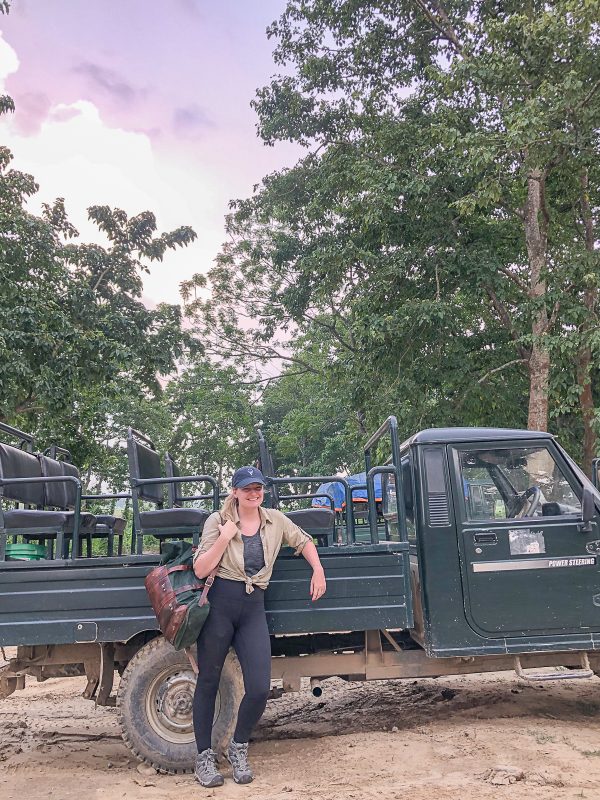
Jeep Safari
Jeep safaris are one of the most popular things to do in Chitwan. The open jeeps fit 10 people and take you through the Chitwan National Park. The park is home to monkeys, deer, wild elephants, rhinos, wild boar, peacocks, tigers (which no one ever sees), and many species of birds.
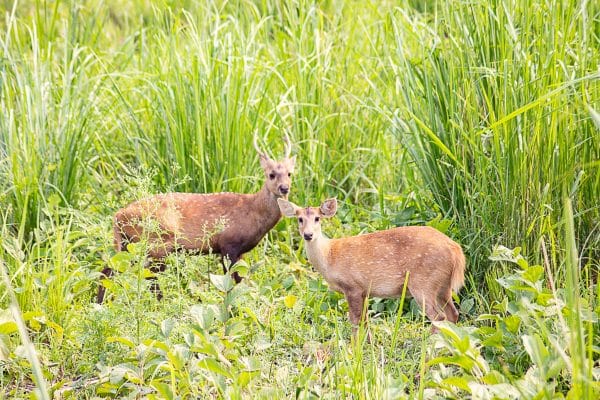
We saw spotted deer, rhinos, monkeys, peacocks, serpent eagles, bee-eaters, and kingfishers on my safari. I loved seeing the different environments within Chitwan.
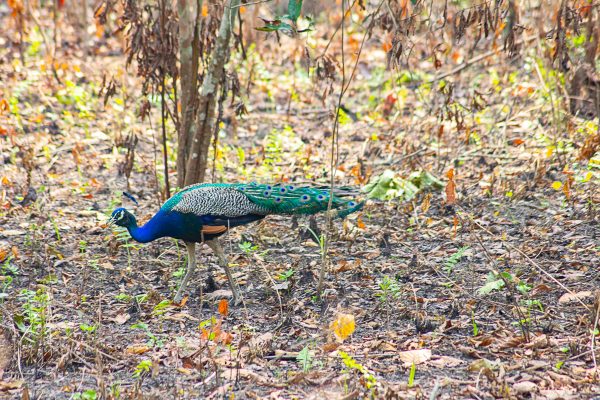
We drove along the river where the elephant grass was over 6 feet tall, and then through forests where we could see peacocks strolling along the forest floor. It was much cooler in the forest under the canopy of tall trees.
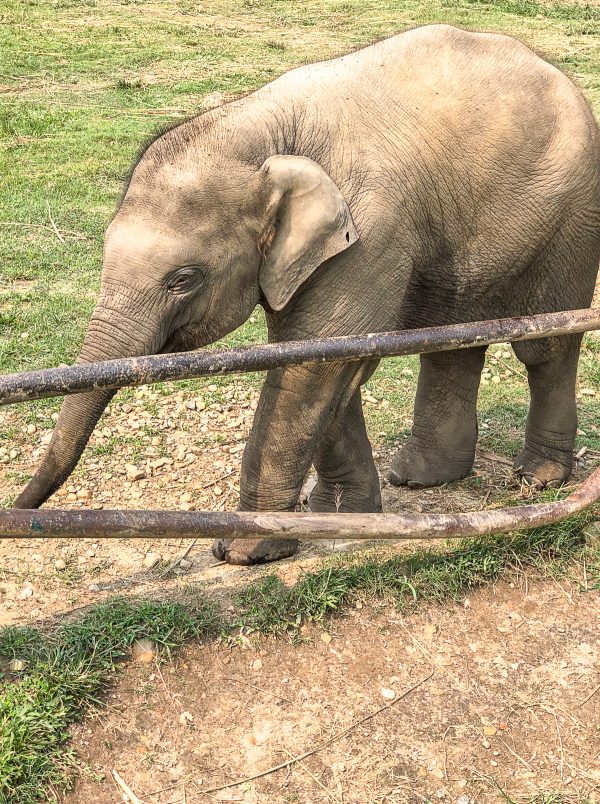
Elephant Breeding Center
The breeding center was pretty depressing. The elephants are tightly chained up. I had thought that the elephants would be roaming free in large fields, but they are separated and chained to posts. It was also unclear what is done with the elephants that are born at the center, I think that they might be used for elephant riding tours. We made a quick stop at the center during a nature walk and it made me uncomfortable, it didn’t seem like the animals were happy.
Visit a Tharu Home
We made a brief stop at a traditional Tharu home. The Tharu people were the first to settle in Chitwan, and they made their homes with elephant grass a mud. The home displays the traditional farming and agricultural tools used by the Tharu.
Tharu Dance Performance
The Tharu Dance Performance seemed to be included in most tours of Chitwan, but it wasn’t great. The first two dances did seem like traditional dances, but some of the others seemed more improvised. At one point, someone did the moonwalk, which probably isn’t a classic Tharu dance move.
Not Recommended
Elephant safaris are also offered in this area, and it was sad to see how the elephants are treated. They are kept chained up to a post with their front two legs chained together so that they can barely move. When they are working, there are four tourists and a guide riding on the elephant’s back. The elephants didn’t look happy. Please don’t support this type of tourism.
Overall I am glad that I got to spend time in Chitwan, the environment is so different from Kathmandu, and I was happy to see a rhino in the wild.

